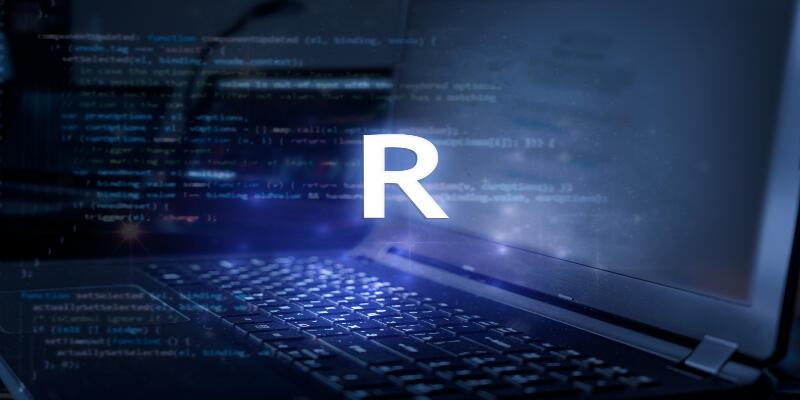Disclaimer: This post may contain affiliate links, meaning we get a small commission if you make a purchase through our links, at no cost to you. For more information, please visit our Disclaimer Page.
Think of the many problems that would be solved if all the data collected in the different sectors globally would be analyzed. This means that more people with excellent programming skills and proficient with programming languages like R to interpret and analyze data are needed. But can someone with no programming experience learn R?
R is a beginner-friendly programming language, and you don’t need prior programming experience to learn it. It’s packaged with powerful, fun-to-use tools in the tidyverse collection for accessing, manipulating, cleaning, analyzing, and visualizing data with R.
The knowledge of R is helpful in many contexts, even for those with no plans of working as full-time programmers or data scientists. Its flexibility makes it an essential tool in the academia, finance, health, and business fields. T
his article discusses how you can learn R without prior coding experience and the requirements for it.
Table of Contents
Does R Require Coding?
R is a free programming language equipped with an extensive library of graphical and statistical methods for analyzing data. Most of its tasks are written in R codes, but the coding is done in C, C++, and FORTRAN programming languages when performing heavy computational tasks.
Therefore, coding is required in R to compute and communicate your findings from the data analysis.
Coding in R is easy, thanks to its easy-to-use interface and its expressive syntax. However, someone with experience coding in Python or Java may find R confusing at first. This is because R’s syntax differs from the other commonly used languages.
For instance, when writing R codes, you may not use the IF conditions or loops, as you would do in Python or Java. Instead, you’ll use programming constructs like lists, vectors, frames, matrices, data tables, etc., to transform bulk data.
The expressive syntax with the statistical functions allows researchers to import and manipulate data quickly, and the charting capabilities within R let you plot the data for better visualization.
How Difficult Is It to Learn R Programming?
R is easy to learn for beginners because you have no other programming knowledge in different languages like Python to confuse you. Also, the language S, which forms the foundation for R, was built for students to help them learn to program step by step.
This simple interface was carried on to R, so learners can learn without hassle.
To make the learning process even easier, you’ll need to determine your reason for learning R. Are you learning it to solve statistical data problems or only to understand R and its programming aspects?
R is designed as a statistical tool; therefore, if your goal is to master it for your statistical problems, learning it should be super easy. All you need is to focus on R’s strength of statistical analysis, armed with your data and a clear goal for the analysis.
You’ll master concepts on the go as you play around with the data and the tools on R. However, there are reasons why some people may find Learning R difficult compared to other languages. They include:
Misleading function names
This happens when you’re already familiar with a language like Python. Some of the apparent functions like ‘sort,’ which sort data on Python, perform a different role on R.
The function that sorts data on R is ‘order,’ although, on R, you don’t need to sort data. Mixed-up parts like there make it confusing and very tricky to learn R.
Sparse Output.
R gives out an output that is ready for further analysis without sorting it further.
For example, when performing cross-tabulation, R provides the count only, while other languages give a more comprehensive output showing the counts, row and column percents, cell percents, and other marginal counts.
However, R has add-ons that you can use to get a more comprehensive output.
Too many data structures
Since it’s designed for statistical problem solving, R has thousands of functions like vectors, lists, arrays, data sets, and matrices. Programmers are also allowed to create their structures and use them.
The complexity comes in with more additions and learning to convert the data set to fit a unique data structure. Mastering this doesn’t prove easy, especially for beginners.
Loop-a-phobia
Loops are helpful in R as they control how the program flows. Still, it’s advisable to avoid them when learning R. Even though they help when executing the same function on multiple variables, and it would be safer to use the ‘apply’ function to run commands on rows and columns.
The process of naming and renaming variables is long and complicated.
For a beginner, naming and renaming variables in R is tedious. With time they discover more straightforward naming tricks and enjoy flexibility, but initially, they freak out. With R, the best you can do is read the variable names from the data source.
And if you need to rename, you can use add-ons that allow you to rename a similar process as the one used in SAS, Stata, or SPSS.
Lack of GUI (Graphical User Interface)
The GUI is helpful for beginners with fewer computer skills to do their analysis. R does not provide a standard GUI; instead, beginners encounter a programming environment that takes time to familiarize themselves.
They have to figure out how to find a suitable GUI, install and activate it. This is a challenging task for someone who is learning R.
Too many commands
When working with other statistic models, you’ll notice their approach employs few commands but with many options for the required output. With R, the commands are many with limited options for the output.
For example, when performing linear regression in SPSS, you specify the commands in advance and execute them for instant output. With R, you’ll enter one command, which will lead you to another.
Complicated process to clear memory
Clearing memory is a basic command that shouldn’t the long route that R makes you go through. A simple ‘clear’ would do the job. With R, you’ll have to identify all the objects in the list that you want to delete and then delete them.
This is tedious for beginners. Fortunately, there’s Rstudio Front-end to R, which clears the memory instantly when you click on its broom icon.
How and Where To Learn R?
Learning R can be an uphill task if you have no idea where to start and how to go about it. There has to be a solid relationship between your interest in learning and how you’re learning it.
Also, where you know matters because that determines the content, you access.
Many people are drawn to study R considering the many applications of R in the industries today. However, after enrolling for courses with excitement, the interest dies off because of the tedious syntax, and they finally drop off.
However, here’s a 5-step process that can help with learning R
Step 1 – Establish your reason for studying R and let it be your motivation.
Before enrolling in that course, or buying textbooks, establish your reasons for studying R and write them down. Having a clear goal will help you beat the syntax boredom and keep you focused.
You might not have a specific project yet, but you can choose an area of interest like data science or data analysis and focus your learning in that direction.
Step 2 – Start with basic syntax.
The best way to learn syntax is by working on real problems. Once you’ve mastered basic syntax, find real problems to solve and apply the little syntax you know. As you challenge yourself to solve the problem, you learn more syntax.
Step 3 – Find projects to work on, especially those with structured data.
Structured data projects are fantastic because they give you hands-on experience with data and help you practice your syntax knowledge while keeping you away from complex unstructured data.
There are many sources online that can provide you with access to actual data for your practice.
Step 4 – Build your own Projects.
This step will help you build a portfolio and prepare you for an actual job. Creating a project will help you gauge how much you’ve learned, and you can refer to areas where you’re not fully polished yet.
Think of it as stair steps; every step in your project should be a bar higher and more challenging than the previous one.
Step 5 – Move on to the complex stuff.
Now you’re no longer a newbie in R, so explore it further and learn the difficult stuff. You can scale up your project so that it handles more data, or you can use raw unstructured data.
You can find new ways to manipulate data and devise tricks in R to maneuver easily through the program. The aim is to increase fluency with the language and use it comfortably on projects.
Where To Learn
You can learn R online by taking up one of these excellent courses online.
The R Programming course – Coursera
R programming by Johns Hopkins equips learners with the knowledge of R and how to use it for data analysis. After completion, you get a valid certificate that boosts your resume for better career advancement.
R Programing Fundamentals – edX
R programming fundamentals is a course by Stanford that introduces learners to R and its basic statistical functions. At the end of the period, you’ll work comfortably with both variable and external data sets. You’ll also get a certificate and get to interact with Robert gentleman, a co-creator of R.
Introduction to R – Datacamp
Introduction to R will equip you with the basic knowledge so that you’re ready to handle projects comfortably. You’ll dive into vectors, factors, matrices, and data frames to equip you with the statistical models available in the R language. The course comes with downloadable offline materials to allow you to study at your own pace and without having to go online.
Conclusion
R’s popularity in major industries continues to stir the need for skilled R programmers. R’s uniqueness causes most of the difficulties encountered while learning R, yet people start learning it expecting it’s like other programming languages.
However, it shouldn’t be too difficult for someone with no experience. Therefore, if you are planning to learn R and have no prior experience, go for it.


